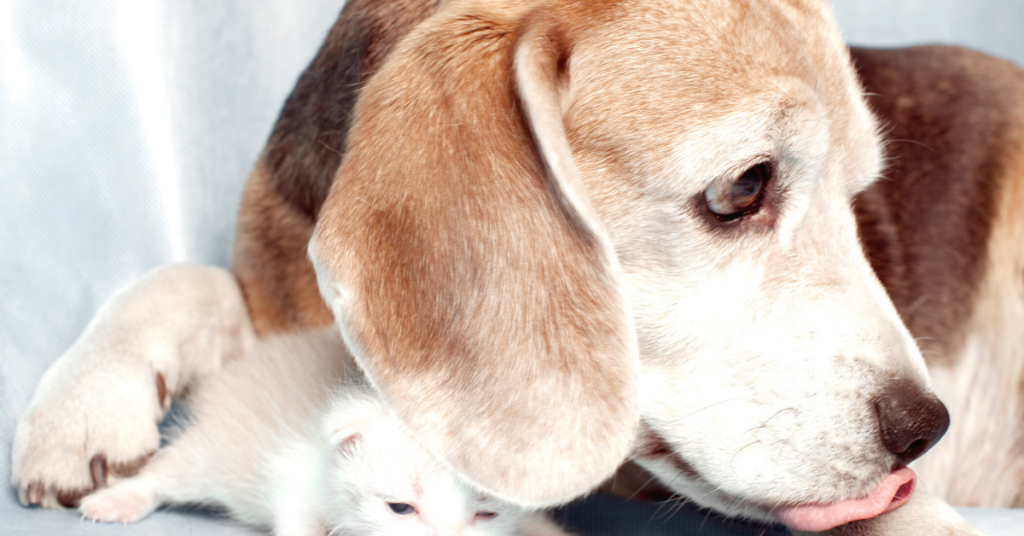Stages of Parvo: What to Expect
Reviewed by Erica L. Tramuta-Drobnis, VMD, MPH, CPH
Knowing the stages of Parvo will help any responsible dog owner detect this potentially deadly disease.
Today there are vaccinations available which will help prevent your dog from getting Parvo.
However, this vaccine does not necessarily prevent your dog from catching Parvo.
This virus can mutate into different strains meaning that it can still pose a danger to your pet.
Therefore it is a good idea to know the signs and stages of parvo, be prepared and better safe than sorry.
What is Parvo?

Canine Parvovirus (CPV) is a very nasty, highly contagious and debilitating disease causing a high mortality rate.
If not treated it can lead to the destruction of blood cells, and the wasting away of the intestinal lining.
This can cause septicemia which is more likely to lead to the death of an infected dog.
First appearing in 1978, the Parvo virus began to spread rapidly through the canine population.
There are two strains of the disease that have been identified; CPV-2a and CPV-2b both of which cause the disease.
An infected dog will shed the virus through its feces leading to infection of unvaccinated dogs through ingestion.
A vaccine has been developed which prepares the immune system of young puppies to prevent them from getting the illness.
Disease protection will begin in about 5 days, culminating in full protection after 14 days.
The virus that causes Parvo in dogs is closely related to feline distemper making the illnesses almost exactly the same.
However, there is no evidence that Canine Parvovirus can be transmitted to cats, or humans.
Symptoms of Parvo

Some symptoms include a fever, or even a low body temperature which can also be caused by an infection.
A dog with Parvo may become lethargic, bloated with abdominal pain, and a loss of appetite.
This can be accompanied by severe diarrhea, often bloody, along with persistent vomiting.
Vomiting usually begins first, and any diarrhea usually has a lot of mucus in it with a very strong and unpleasant smell.
Diagnosing Parvo

There is a very simple test carried out in-clinic to quickly determine if your dog has parvo.
Since many of the symptoms of Parvo can also be present for other diseases your vet will need to carry out a test to confirm.
Treatment Options for Parvo

The good news is that Parvo can have a high survival rate if it is caught quickly, and treated aggressively.
A dog with Parvo will most likely become dangerously dehydrated quickly and therefore will need the administration of IV fluids.
Anti-inflammatory drugs, antibiotics so as to prevent or treat septicemia, as well as antispasmodics to control any vomiting and diarrhea.
Most animals will recover as long as severe cases of septicemia and dehydration have not set in.
If caught early and the animal is vigorously cared for then about will 90% make a full recovery.
Recovery times will vary depending on how severe the case is for a particular dog, with some breeds fairing worse than others.
Stages of Parvo

Knowing the stages of parvo can help you be prepared in caring for your dog as best as possible.
Stage 1: Exposure
Exposure to an uninfected dog through diseased feces, where the virus can live for up to a year in the dirt.
This virus can also be passed by your dog sniffing an infected dog’s butt or ingesting its saliva.
It can become less virulent during winter months just to regain its strength as the weather warms back up.
A dog can shed the virus through its poop for up to three weeks once infected.
Stage 2: Incubation
The incubation period of the Parvovirus from first contact is three to five days.
It is impossible to know early on whether or not your dog has been exposed to this very hardy virus.
If you learn that your pet may have come in contact with an infected dog, it may be a good idea to contact your veterinarian.
Stage 3: Symptoms Appear
After five to eight days after first exposure symptoms are likely to begin to appear.
These symptoms may include:
- Vomiting
- Bloody or watery diarrhea. Or both.
- Fever
- Low body temperature
- Loss of appetite
- Bloated painful abdomen.
- Lethargic
Stage 4: Veterinarian Diagnosis
Moving quickly to get your dog to the vet if you suspect Parvo will be your best action to ensure your dog recovers.
A veterinary professional will be able to administer an in-clinic test that can quickly confirm Parvo if present.
Undiagnosed dogs with the Canine Parvovirus have a very slim chance for survival.
Stage 5: Treatment
A dog can recover at home if the disease is caught early enough, and drugs are prescribed by your veterinarian.
Most often treatment begins with rehydration through the use of IV fluids to counter the loss of liquids through vomiting and diarrhea.
This is followed by the administration of antibiotics, anti inflammatories, antispasmodics and vitamins.
In some severe cases blood transfusions may be required as part of an aggressive treatment plan.
Stage 6: Recovery
Puppies recovering from Parvo will take anywhere between 14 and 20 days, and this is true for older dogs as well.
While in treatment and recovery it will be important to keep your pet isolated from other dogs.
It will also be a good idea to disinfect anything your dog uses as well as the room your dog is staying in.
While in recovery you will want to ensure that your dog is eating and drinking on a regular schedule.
A bland diet is usually best for the first week, with the dog’s regular food being slowly reintroduced after that.
When to See a Veterinarian

You should see your veterinarian at the first sign that something is not right with your canine pet.
Also if you are informed that there is a Parvovirus outbreak that your dog may have been exposed to.







